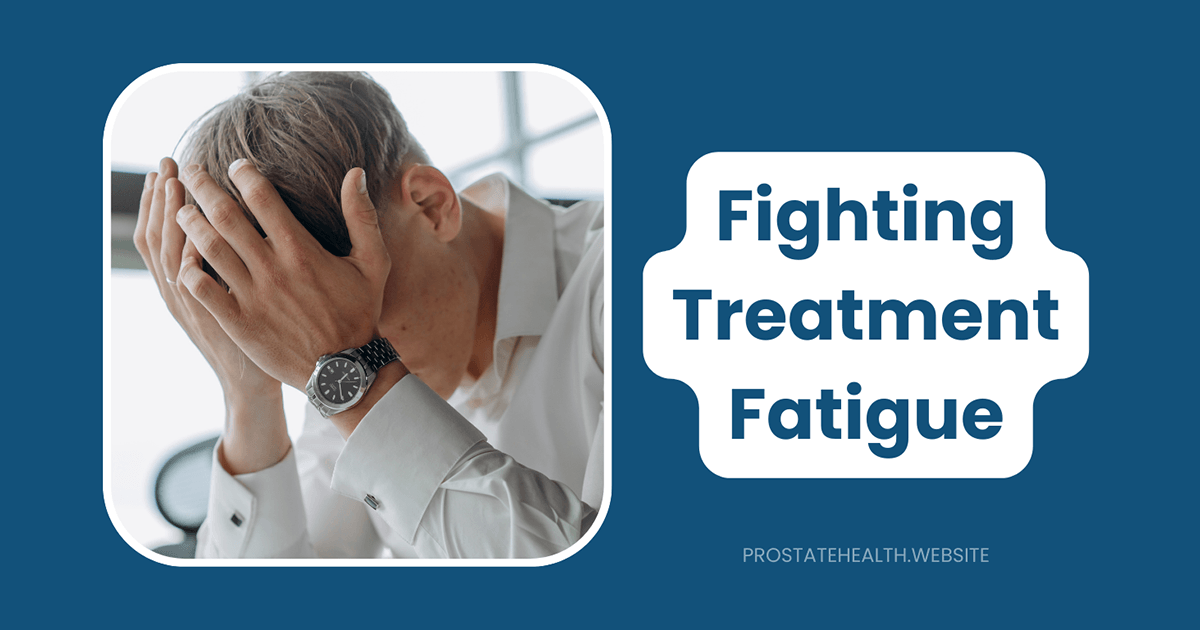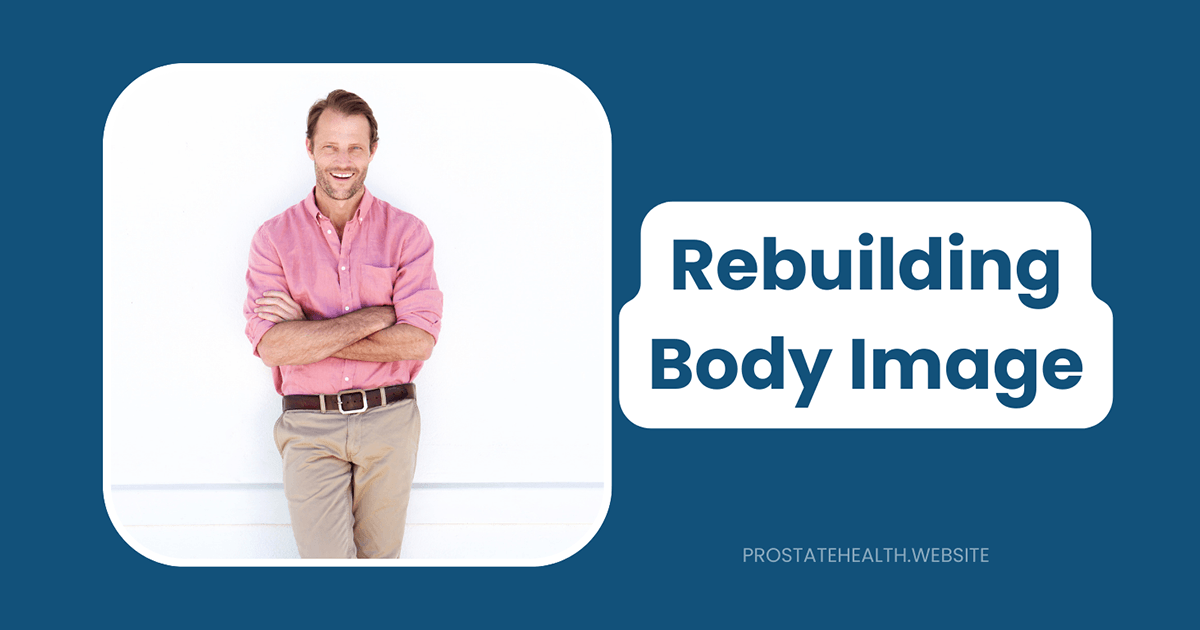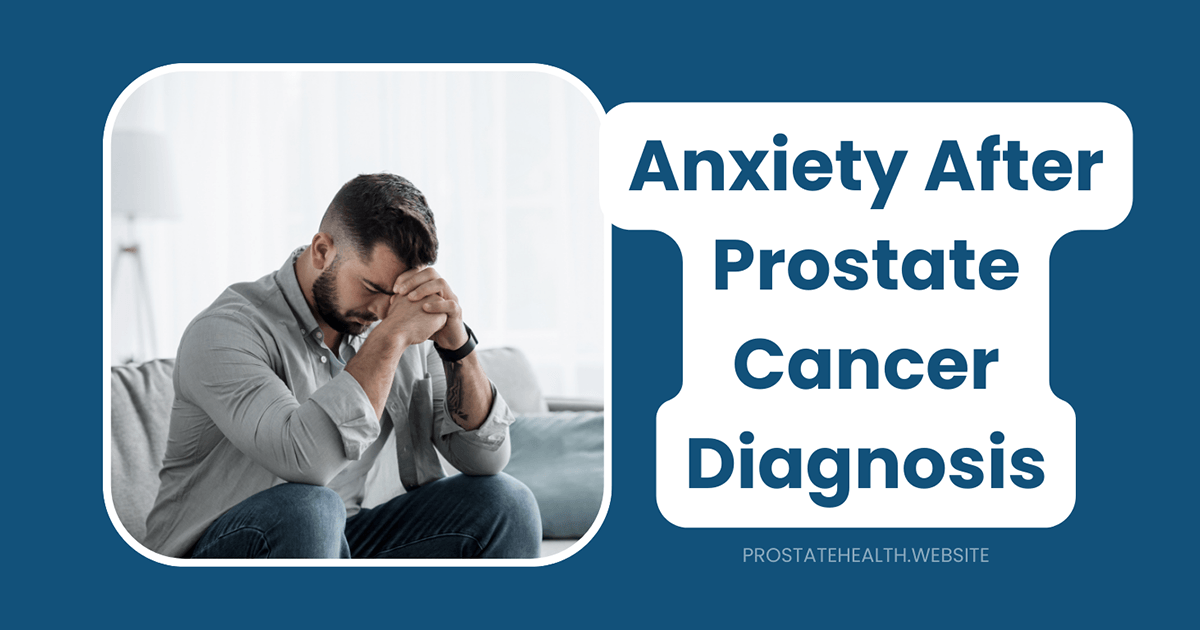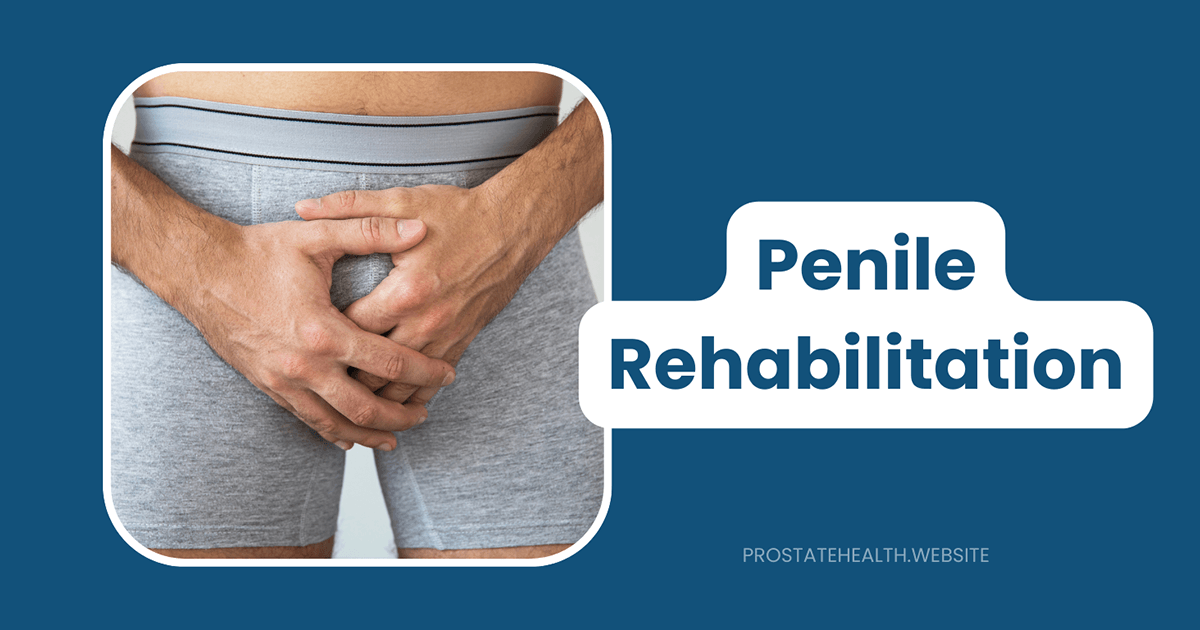Erectile Dysfunction After Prostate Treatment: Medical Solutions
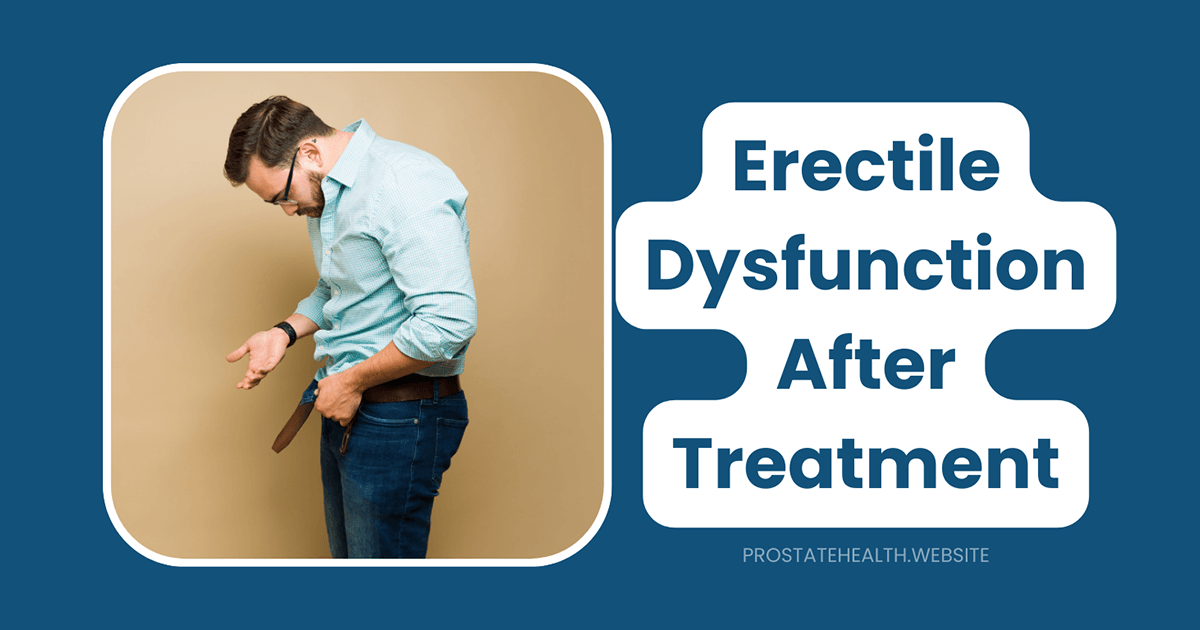
Erectile dysfunction (ED) is one of the most common and challenging side effects of prostate cancer treatment. Whether you’ve undergone radical prostatectomy, radiation therapy, or hormone treatment, the impact on your sexual function can be significant and distressing.
As someone who’s spent years advocating for men’s health, I’ve spoken with countless men navigating this difficult terrain. The good news is that medical science has made remarkable advances in addressing post-treatment ED, offering several effective solutions that can help restore sexual function and improve quality of life.
In this comprehensive guide, we’ll explore the full spectrum of medical treatments available for ED after prostate cancer therapy, from oral medications to cutting-edge surgical techniques.
The Scope of the Issue: What to Expect
Before diving into solutions, it’s important to understand what you might experience:
- Nearly all men experience some degree of erectile dysfunction in the first few months after prostate treatment
- Following nerve-sparing prostatectomy, about 40-50% of men return to their pre-treatment erectile function within one year
- After two years, approximately 30-60% of men recover their pre-treatment function
- For radiation therapy, about 25-50% of men who undergo brachytherapy and nearly 50% of those receiving external beam radiation experience ED
- Unlike surgery, where ED occurs immediately, radiation-related ED tends to develop gradually over time
Patience is essential—improvement can continue for up to two years after treatment.
Factors Affecting Recovery
Several factors influence your likelihood of regaining erectile function:
1. Age
Younger men (under 60) typically have better recovery rates than older men. This is partly due to better baseline erectile function and healthier blood vessels.
2. Pre-Treatment Function
Men with strong erectile function before treatment have better chances of recovery afterward. This underscores the importance of honest pre-treatment discussions with your healthcare provider.
3. Surgical Technique
Nerve-sparing surgical approaches significantly improve outcomes. The precision of robotic-assisted procedures may offer advantages in preserving the delicate nerve bundles responsible for erections.
4. Treatment Type
Different treatments carry different risks:
- Radical prostatectomy: Immediate ED with potential for improvement over 1-2 years
- Radiation therapy: Gradual onset of ED with less likelihood of spontaneous improvement
- Hormone therapy: Can reduce libido and erectile function for the duration of treatment
5. Underlying Health Conditions
Conditions like diabetes, heart disease, and high blood pressure can compound treatment-related ED and slow recovery.
Medical Solutions: The Treatment Ladder
Treatment for post-prostate treatment ED typically follows a step-by-step approach, starting with less invasive options and progressing as needed.
First-Line Treatment: Oral Medications (PDE5 Inhibitors)
Phosphodiesterase type 5 (PDE5) inhibitors are usually the first treatment offered. These medications include:
- Sildenafil (Viagra): Works for about 4 hours, taken 30-60 minutes before sexual activity
- Tadalafil (Cialis): Available in daily low-dose form or as needed, with effects lasting up to 36 hours
- Vardenafil (Levitra): Similar to sildenafil but may work slightly faster
- Avanafil (Stendra): The newest option, with potentially fewer side effects and faster onset
Effectiveness: About 75% of men who undergo nerve-sparing prostatectomy or precise forms of radiation therapy report successfully achieving erections with these medications.
How they work: These medications enhance the effects of nitric oxide, a natural chemical your body produces that relaxes muscles in the penis, increasing blood flow and facilitating erections in response to sexual stimulation.
Limitations: PDE5 inhibitors require at least some nerve function to work effectively. If both nerve bundles were removed during surgery, these medications may be less effective.
Side effects: May include headache, flushing, indigestion, nasal congestion, and rarely, vision changes.
“PDE5 inhibitors work best when at least one neurovascular bundle has been preserved during surgery. They’re not just for achieving erections—they’re also an important part of penile rehabilitation.” – Dr. John Mulhall, Director of Sexual Medicine, Memorial Sloan Kettering Cancer Center
Second-Line Treatment: Vacuum Erection Devices (VEDs)
When oral medications aren’t effective, vacuum erection devices offer a non-invasive alternative.
How they work: A plastic cylinder is placed over the penis, and a pump creates a vacuum that draws blood into the penis. A tension ring placed at the base of the penis maintains the erection for up to 30 minutes.
Effectiveness: About 80% of men find VEDs successful for achieving erections sufficient for intercourse.
Benefits:
- Works regardless of nerve damage
- Non-pharmaceutical approach
- May help prevent penile shortening after prostatectomy
- Can be used in conjunction with other treatments
Limitations:
- Some men find the erection feels unnatural
- The penis may feel cold or numb
- Requires some manual dexterity
- May interfere with spontaneity
Side effects: Potential bruising, pain, or trapped ejaculate.
Third-Line Treatment: Penile Injections
Intracavernosal injections involve injecting medication directly into the base or side of the penis to produce an erection.
Medications used:
- Alprostadil (Caverject, Edex): Used alone or in combination
- Bimix: A combination of papaverine and phentolamine
- Trimix: A combination of papaverine, phentolamine, and alprostadil
Effectiveness: Up to 90% of men can achieve erections sufficient for intercourse with injections, even when oral medications fail.
How they work: These medications relax smooth muscles and dilate blood vessels in the penis, causing an erection within 5-15 minutes that typically lasts 30-60 minutes.
Benefits:
- Highly effective regardless of nerve damage
- Produces a natural-feeling erection
- Reliable and predictable results
Limitations:
- Requires comfort with self-injection
- May cause anxiety for some men
- Requires proper training and technique
Side effects: Potential pain, bruising, scarring, or priapism (prolonged erection requiring medical attention).
Many men find that with proper training, the injection process becomes routine and manageable.
Alternative Third-Line Option: Intraurethral Suppositories
For men uncomfortable with injections, intraurethral suppositories (MUSE) offer an alternative.
How they work: A tiny alprostadil pellet is inserted into the urethra using an applicator, where it dissolves and is absorbed into the erectile tissue.
Effectiveness: Less effective than injections, with success rates around 30-40% after prostate surgery.
Limitations:
- Less reliable than injections
- May cause urethral pain or burning
- More expensive than some alternatives
Fourth-Line Treatment: Penile Implants
For men who don’t respond to other treatments, penile implants (prostheses) offer a permanent solution with the highest satisfaction rates.
Types of implants:
- Three-piece inflatable implant: Consists of two cylinders implanted in the penis, a pump in the scrotum, and a fluid reservoir in the abdomen. Offers the most natural erection and complete flaccidity when not in use.
- Two-piece inflatable implant: Similar to the three-piece but with the fluid reservoir located in the pump. Slightly less rigid than the three-piece.
- Semi-rigid or malleable implant: Rods that keep the penis firm but bendable. Simpler but always semi-rigid, which some men find less desirable.
Effectiveness: A properly functioning implant is 100% effective in creating erections, with about 70% of men reporting satisfaction with their implants even after 10 years.
Benefits:
- Most reliable solution for ED
- No medications required
- Allows for spontaneity
- High satisfaction rates
- Typically lasts 10-15 years
Limitations:
- Requires surgery
- Irreversible (natural erections no longer possible)
- Risk of mechanical failure or infection
- Most expensive option (though often covered by insurance)
Recovery: Most men can resume sexual activity about 6 weeks after implant surgery.
Emerging Treatments and Techniques
Medical science continues to advance, offering new hope for men with post-treatment ED.
1. NeuroSAFE Technique
One of the most promising recent developments is the NeuroSAFE surgical technique, which has shown remarkable results in preserving erectile function.
How it works: During prostate removal surgery, the surgeon removes the prostate and then performs an immediate pathological examination of the surgical margins while the patient is still under anesthesia. This allows for real-time decision-making about whether nerves can be safely preserved.
Effectiveness: According to research presented at the 2025 European Association of Urology Congress, the NeuroSAFE technique nearly doubles the preservation of erectile function:
- 39% of men in the NeuroSAFE group had no or mild ED after one year, compared to 23% in the standard surgery group
- Only 38% of NeuroSAFE patients experienced severe ED, compared to 56% in the standard group
Availability: While this technique has been available for over a decade, it’s primarily used in Germany and select centers worldwide. Ask your surgeon if they offer this approach or can refer you to a center that does.
2. Low-Intensity Shockwave Therapy (LiSWT)
This non-invasive treatment uses low-intensity sound waves to improve blood flow to the penis and stimulate new blood vessel formation.
How it works: Sound waves are applied to the penis using a wand-like device in a series of sessions over several weeks.
Research status: Studies show promising results for mild to moderate ED, but more research is needed specifically for post-prostate treatment ED.
Availability: Increasingly available at specialized men’s health clinics, though it may not be covered by insurance as it’s still considered experimental for post-prostate treatment ED.
3. Stem Cell Therapy
Stem cell therapy represents a cutting-edge approach that aims to regenerate damaged erectile tissue.
How it works: Stem cells are injected into the penis to potentially repair nerve and tissue damage.
Research status: Still experimental, with clinical trials underway. Early animal studies show promise, but human research is in early stages.
Availability: Primarily available through clinical trials or specialized centers offering experimental treatments.
4. Platelet-Rich Plasma (PRP) Therapy
Similar to treatments used for sports injuries, PRP therapy uses the patient’s own blood components to potentially stimulate healing.
How it works: Blood is drawn from the patient, processed to concentrate the platelets, and then injected into the penis.
Research status: Limited evidence for effectiveness in post-prostate treatment ED, but some men report improvements.
Availability: Available at some men’s health clinics, though typically not covered by insurance due to limited evidence.
Penile Rehabilitation: A Proactive Approach
Rather than waiting for erectile function to return on its own, many specialists now recommend a proactive approach called penile rehabilitation.
What Is Penile Rehabilitation?
Penile rehabilitation is a program designed to improve blood flow to the penis, prevent tissue damage, and optimize the chances of recovering erectile function after prostate treatment.
Key Components of Rehabilitation Programs
- Early intervention: Starting within a few weeks after surgery or during/after radiation therapy
- Regular erections: Achieving erections 2-3 times weekly, whether through:
- Oral medications
- Vacuum devices
- Injections
- Sexual stimulation
- Consistent program: Following the program for at least 6-12 months
- Monitoring and adjustments: Regular follow-up with your healthcare provider to assess progress and adjust treatment as needed
Does Rehabilitation Work?
Research on penile rehabilitation shows mixed results, but many specialists believe it offers benefits:
- May improve blood flow to penile tissues
- Could prevent penile shortening after surgery
- May enhance the effectiveness of ED treatments
- Potentially speeds the return of natural erections
Even if you’re not currently sexually active, rehabilitation may help preserve function for when you’re ready to resume sexual activity.
Creating a Personalized Treatment Plan
The most effective approach to post-treatment ED is a personalized plan developed with your healthcare provider. Here’s how to create one:
1. Honest Assessment
Start with an honest discussion about:
- Your pre-treatment erectile function
- Your expectations and goals
- Your partner’s involvement and support
- Your comfort level with different treatment options
2. Sequential Approach
Most specialists recommend a step-by-step approach:
- Begin with oral medications if appropriate
- Move to vacuum devices or injections if needed
- Consider implants if other options aren’t effective
3. Combination Therapy
Many men benefit from combining treatments:
- Daily low-dose PDE5 inhibitor plus as-needed higher dose
- PDE5 inhibitor plus vacuum device
- Different approaches for different situations
4. Regular Reevaluation
ED treatment isn’t static—it should evolve as you recover:
- Schedule regular follow-ups with your provider
- Be open about what’s working and what isn’t
- Adjust treatments as your needs change
5. Address Psychological Factors
ED after prostate treatment has both physical and psychological components:
- Consider counseling or therapy if anxiety or depression is present
- Include your partner in discussions when appropriate
- Join a support group to connect with others facing similar challenges
Insurance Coverage and Cost Considerations
Treatment costs vary widely, and insurance coverage can be inconsistent:
Medication Costs
- PDE5 inhibitors: Generic versions are more affordable ($1-5 per pill) compared to brand names ($25-50 per pill)
- Injection medications: $15-45 per dose, depending on formulation
- Intraurethral suppositories: $125-150 per dose
Device Costs
- Vacuum erection devices: $200-500 for a quality device
- Penile implants: $10,000-20,000 including surgical costs
Insurance Coverage
- Medicare: Typically covers ED treatment related to prostate cancer
- Private insurance: Coverage varies widely; many plans cover treatment when related to cancer therapy
- Prior authorization: Often required, with documentation of medical necessity
Patient Assistance Programs
Many pharmaceutical companies offer assistance programs for those who cannot afford medications. Ask your healthcare provider about these options.
Beyond Medical Solutions: A Holistic Approach
While this article focuses on medical solutions, a comprehensive approach to ED after prostate treatment should include:
Lifestyle Modifications
- Regular exercise: Improves blood flow and overall cardiovascular health
- Healthy diet: Mediterranean-style eating patterns support vascular health
- Weight management: Excess weight can worsen ED
- Smoking cessation: Smoking damages blood vessels, including those in the penis
- Limited alcohol: Excessive alcohol can worsen ED
Psychological Support
- Individual therapy: Addresses anxiety, depression, or relationship concerns
- Couples counseling: Helps partners navigate changes in sexual function
- Support groups: Provide connection with others facing similar challenges
Communicating with Your Partner
Open communication with your partner is essential when addressing ED after prostate treatment:
- Share information: Help your partner understand the physical nature of treatment-related ED
- Express feelings: Discuss fears, frustrations, and hopes
- Explore alternatives: Consider different forms of intimacy during recovery
- Include your partner: When appropriate, involve your partner in medical appointments
When to Seek Help
Don’t delay seeking help for ED after prostate treatment. Early intervention may improve outcomes. Contact your healthcare provider if:
- You have questions about what to expect regarding sexual function
- You’re ready to discuss treatment options
- Current treatments aren’t working effectively
- You experience side effects from ED treatments
- You’re feeling anxious or depressed about sexual changes
The Bottom Line: There Is Hope
Erectile dysfunction after prostate treatment is common, but it doesn’t have to be permanent. With the range of effective medical solutions available today—from oral medications to cutting-edge surgical techniques—most men can find a treatment that works for them.
The key is persistence, open communication with healthcare providers, and a willingness to try different approaches. Remember that recovery takes time, and what works best may evolve as your body heals from treatment.
By taking a proactive approach to erectile function after prostate treatment, you can maintain or restore this important aspect of your life and well-being.

